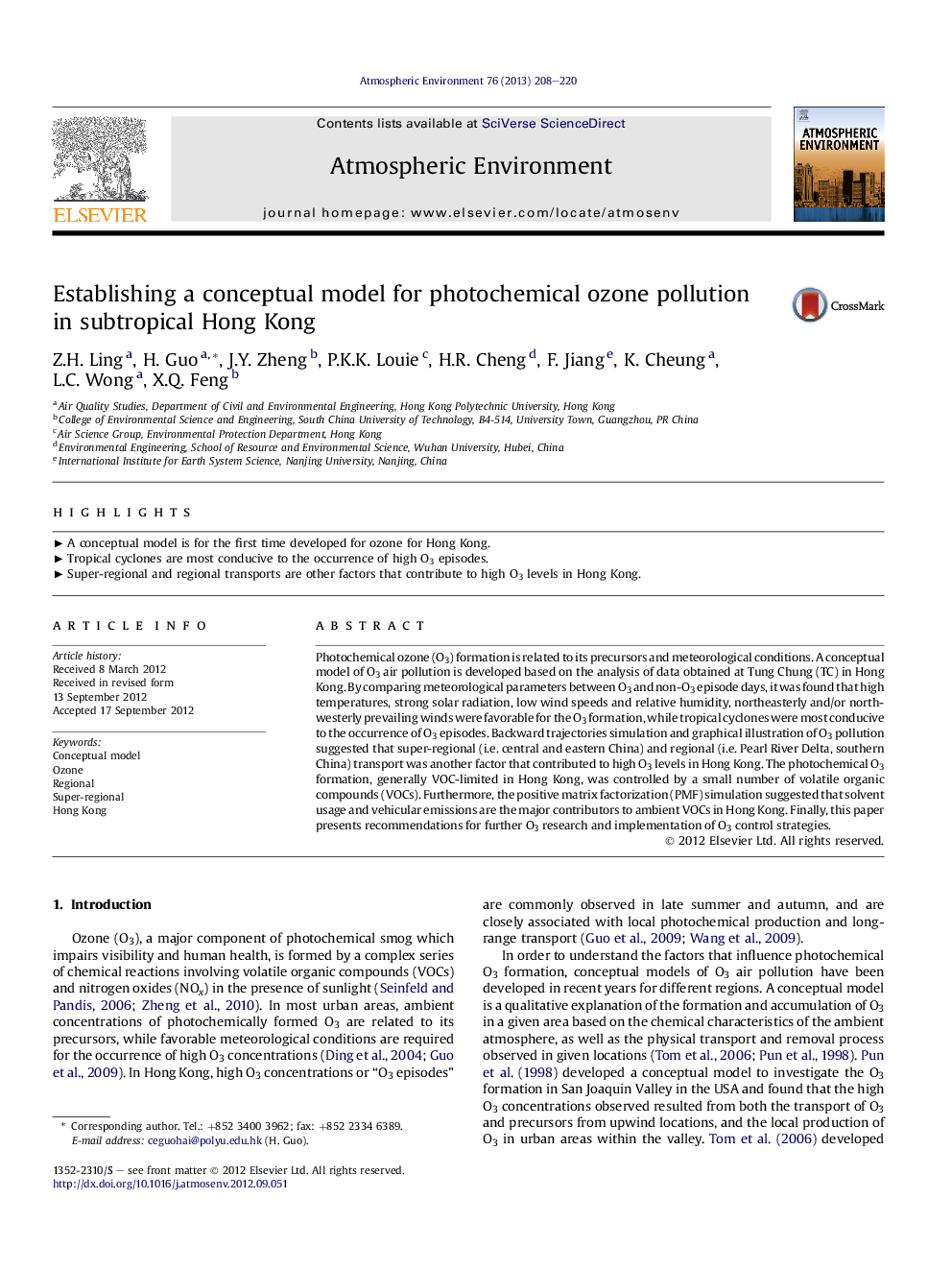| Article ID | Journal | Published Year | Pages | File Type |
|---|---|---|---|---|
| 4438266 | Atmospheric Environment | 2013 | 13 Pages |
Photochemical ozone (O3) formation is related to its precursors and meteorological conditions. A conceptual model of O3 air pollution is developed based on the analysis of data obtained at Tung Chung (TC) in Hong Kong. By comparing meteorological parameters between O3 and non-O3 episode days, it was found that high temperatures, strong solar radiation, low wind speeds and relative humidity, northeasterly and/or northwesterly prevailing winds were favorable for the O3 formation, while tropical cyclones were most conducive to the occurrence of O3 episodes. Backward trajectories simulation and graphical illustration of O3 pollution suggested that super-regional (i.e. central and eastern China) and regional (i.e. Pearl River Delta, southern China) transport was another factor that contributed to high O3 levels in Hong Kong. The photochemical O3 formation, generally VOC-limited in Hong Kong, was controlled by a small number of volatile organic compounds (VOCs). Furthermore, the positive matrix factorization (PMF) simulation suggested that solvent usage and vehicular emissions are the major contributors to ambient VOCs in Hong Kong. Finally, this paper presents recommendations for further O3 research and implementation of O3 control strategies.
► A conceptual model is for the first time developed for ozone for Hong Kong. ► Tropical cyclones are most conducive to the occurrence of high O3 episodes. ► Super-regional and regional transports are other factors that contribute to high O3 levels in Hong Kong.
